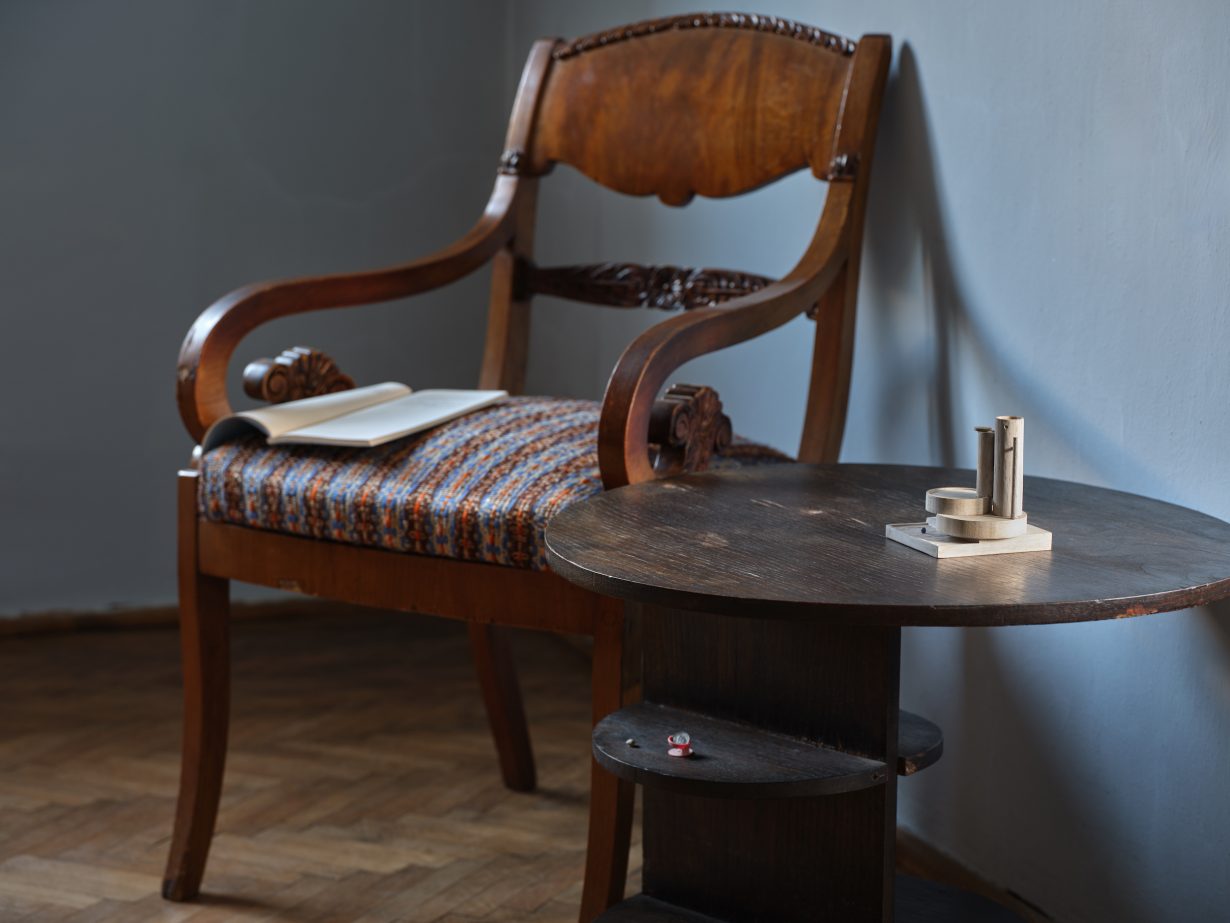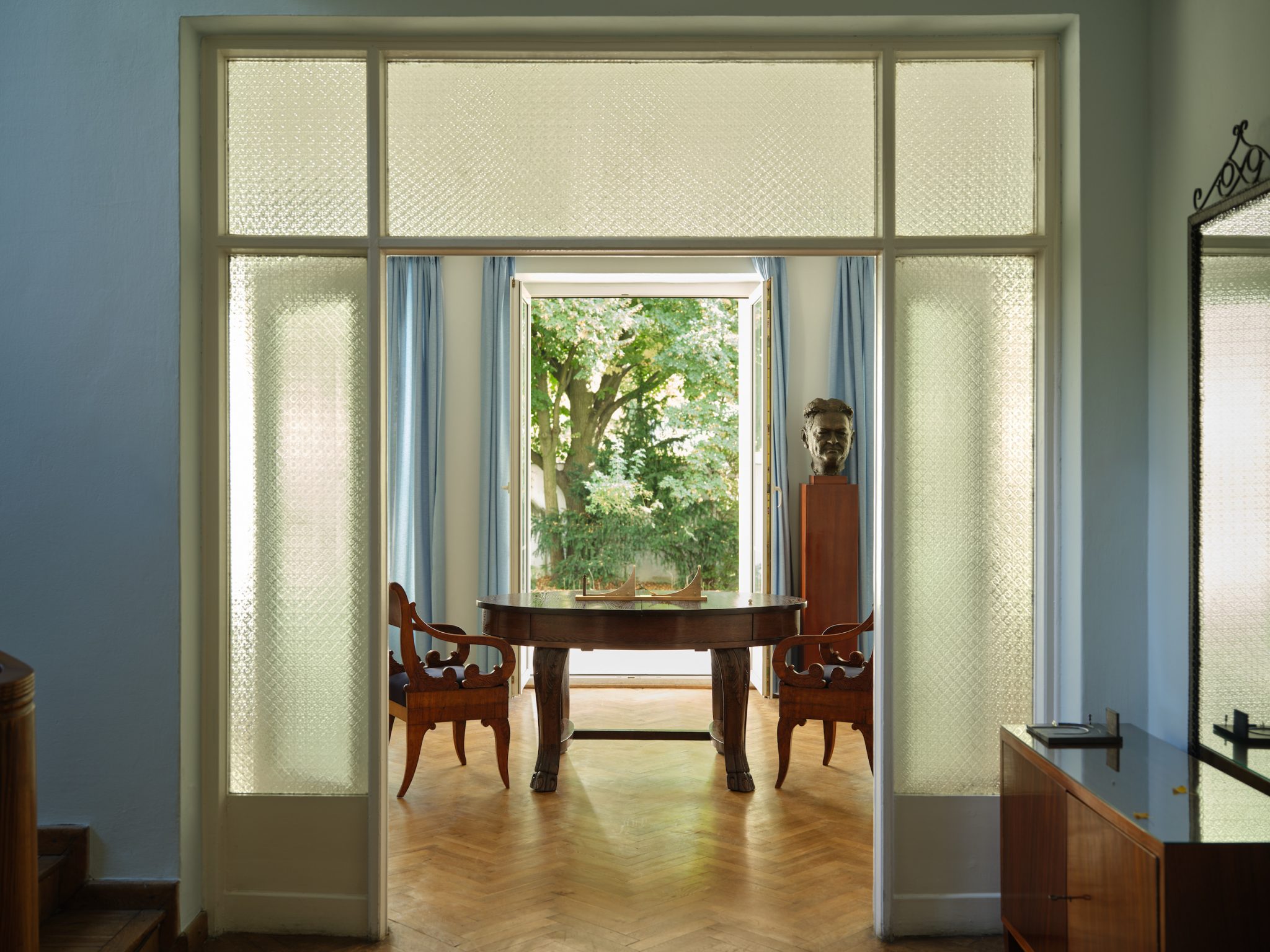In the late Polish poet’s preserved home, sculptures by the artist Kenji Ide discreetly inhabit the space – and transcend time
In the modest, state-assigned two-bedroom home in which Władysław Broniewski lived with his wife from 1951 until his death in 1962, the poet’s bedroom remains untouched, preserved exactly as it was. Now the house is his museum. A dark-wood walking stick still leans against his single bed, beside a chair and a simple bedside cabinet. The setting is utilitarian, a space marked by pragmatism and restraint. On his cushioned chair rests a book, A Fool’s Life (1927) by Ryūnosuke Akutagawa, open to a passage titled ‘Self’, which reads: ‘Seated with his elder at a café table, he was smoking roll-ups non-stop. He hardly opened his mouth. But he listened to his elder’s words.’ This page is not randomly open; it’s an intentional choice by Tokyo-based artist Kenji Ide, whose small sculptures discreetly inhabit Broniewski’s space in the exhibition Some other times, forging a dialogue that transcends the time that separates the artist from the poet.
Ide’s works invite a slow, meticulous viewing. His sculptures, often small enough to be mistaken for found objects, are subtly integrated into the house’s corners and ledges, placed under tables, stairwells and on window-sills. They are primarily made of hand-carved lauan wood, a type of plywood typically found in Japan, subtly hinting at his Japanese heritage, and creating a presence that suffuses Broniewski’s home. On the dining room table, the exhibition’s titular piece (all works 2024) is composed of thin pinewood strips forming three delicate rectangular posts, each capped with tiny spheres. Suspended between two of the posts are two carved shapes gently sloping downwards, resembling inverted crescent moons. Reading Ide’s notes in the accompanying gallery text about his sense of relationship to Broniewski, one might imagine one moon representing Ide, the other Broniewski, bridging cultural and temporal distances, inviting viewers to reflect on the fluidity of time, history and memory.
Each of Ide’s sculptures crystallises fragments of personal memory and experience; the forms are whimsical, with small boots, collections of found objects – coins, plastic wrapping, leaves and tiny gathered fabric balls – scattered across different surfaces. Driving in shape, a square wooden block with a carved-in pathway, lies flat on the hallway side-table, the channel a meditation on the artist’s long drives and walks that inspire much of his work. Here, the pathway embodies the reflective slowness that pervades the exhibition. This work, like others, slows down our perception of time. Rather than capturing a single moment, it suggests an ongoing process.

Ide’s work reflects a commitment to documenting the intimate, the microcosmic, in a time that feels marked by global rupture. Tangential dam, a small, varnished wooden L-shaped sculpture placed on a window ledge, is supported by two slender wedges and features a single match-thin pole topped with a white sphere. It reads as a figure, delicate and vulnerable, standing alone in a larger, indifferent universe.
Our experience of physical time is refracted through memory, a process at once entropic and generative. Ide’s work seeks to crystallise this inherent chaos, and by doing so, charting how memory reshapes and reproduces our understanding of the world. As Gaston Bachelard writes in The Poetics of Space (1957), a home is more than shelter; it is a ‘topography of our intimate being’. Ide’s works extend this notion to Broniewski’s home as quiet, reverent interventions that respond to the emotional resonance of a place marked by memory. Rather than adorning Broniewski’s house, Ide’s sculptures engage with it, transforming each surface into a site of reflection. Through this quiet dialogue, Ide’s work heightens our awareness of space and memory, tracing the contours of lives – those of Broniewski, Ide and the viewer – through gestures that are both intimately personal and universally resonant.
The simple elegance of Ide’s work – its unadorned quality and humble materials – evokes a sense of immediacy. Ide’s delicate engagement with time, memory and life’s impermanence, produces an experience that draws viewers away from their daily rhythms and immerses them in a sensory, introspective world. Here, time unfolds quietly, allowing for contemplation and an invitation to feel, to notice anew.
Some other times at Władysław Broniewski Museum of Literature, Warsaw, 26 September – 26 October
